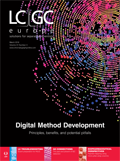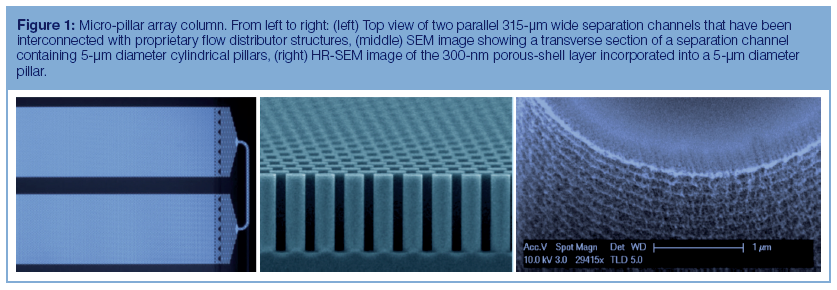Supplementary Appendix 1 to A Practical Approach to Modelling of Reversed-Phase Liquid Chromatographic Separations: Advantages, Principles, and Possible Pitfalls
LCGC Europe
This information is supplementary to the article “A Practical Approach to Modelling of Reversed-Phase Liquid Chromatographic Separations: Advantages, Principles, and Possible Pitfalls” that was published in the March 2018 LCGC Europe issue.
Determination of dwell volume
- Replace the column with a 100 cm x 0.1 mm capillary to generate enough pressure to ensure proper function of check valves.
- Use water as solvent A and 10 mg/L of uracil in water as solvent B.
- Set the flow rate to the flow that should be modelled.
- Programme a 1 µL injection of water to ensure that the auto-sampler is in the flow path and contributes to the dwell volume.
- Run a gradient with a 5-min isocratic hold followed by a 10-min linear gradient with the same slope as the average gradient used for collection of the retention modelling data, for example 10%B at 0 min, from 10 to 20%B between 5 and 15 min, from 20 to 10%B between 25 and 25.1 min.
- UV detection at 259 nm at 20 Hz to ensure a well-defined curve.
- The dwell volume is defined using the gradient start and stop time and time point for 50% of maximal signal as described in Figure 2(a).
- In order to evaluate the linearity (Figure 2) an extra run is made where the range is extended to 0–100%B. An extra gradient is necessary since flow rate and gradient range influence the determination of dwell volume.

New Method Explored for the Detection of CECs in Crops Irrigated with Contaminated Water
April 30th 2025This new study presents a validated QuEChERS–LC-MS/MS method for detecting eight persistent, mobile, and toxic substances in escarole, tomatoes, and tomato leaves irrigated with contaminated water.
Accelerating Monoclonal Antibody Quality Control: The Role of LC–MS in Upstream Bioprocessing
This study highlights the promising potential of LC–MS as a powerful tool for mAb quality control within the context of upstream processing.
University of Tasmania Researchers Explore Haloacetic Acid Determiniation in Water with capLC–MS
April 29th 2025Haloacetic acid detection has become important when analyzing drinking and swimming pool water. University of Tasmania researchers have begun applying capillary liquid chromatography as a means of detecting these substances.

.png&w=3840&q=75)

.png&w=3840&q=75)



.png&w=3840&q=75)



.png&w=3840&q=75)









